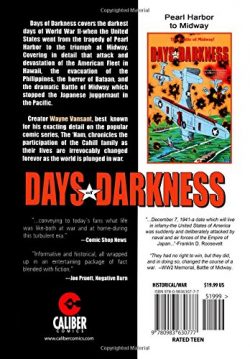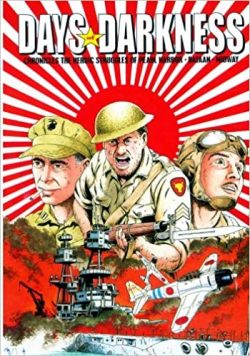

By Wayne Vansant (Caliber)
ISBN: 978-0-98363-077-7
Comics creators have a strong history of treating war stories right, and none more so that those who’ve actually served in combat. Wayne Vansant was born in Atlanta, Georgia on July 13th 1949, making him an ideal age to fight in the Vietnam War. After leaving the US Navy he attended Atlanta College of Art, graduating in 1975.
He followed Michael Golden as illustrator on Marvel’s landmark 8-year miniseries The ‘Nam (notching up over 50 issues), and – with a few notable exceptions – has spent his career writing and drawing war comics and historical books about combat for companies as varied as Eclipse, Byron Preiss, Caliber, Dark Horse and Penguin. His canon includes New Two-Fisted Tales, Real War Stories, Shiloh, The Vietnam War: A Graphic History, Semper Fi (Tales of the Marine Corps) and Witches’ Caldron, as well as Foreign Legion epic Battron and Knights of the Skull.
His Heritage Collection: Civil War and World War II are superb and incisive commemorations of those conflicts and he’s also adapted Stephen Crane’s The Red Badge of Courage.
In the early 1990s he worked with Apple Comics, on a black and white miniseries detailing the early days of America’s Pacific war, immediately following Japan’s shameful attack on Pearl Harbor on the morning of Sunday December 7th 1941. It was collected as a trade paperback by Caliber in 2012 (still readily available) and is also out there in a number of eBook formats.
Seen through the eyes of a multi-generational and far-flung Texas family, the saga follows events and concerns affecting the Cahill clan and, by extension, every American from that horrific sneak attack to the critical turning point when they finally started winning battles against a seemingly inhuman and apparently unbeatable foe.
With a tremendous amount of detail easily delivered by a range of characters of every stripe and persuasion, the tale begins with a birthday party in Texas and an appalling war crime in Hawaii on the ‘Day of Infamy’, rapidly fleshed out by the immediate aftermath in ‘At Dawn We Slept, At Dusk We Wept’. Here the view is widened to encompass the multiple and simultaneous unannounced assaults on military and civilians in the Philippines…
The onslaught expands in ‘After Pearl Harbor – Japanese Juggernaut’ as British, French and Dutch colonies from Malaysia to Bangkok, Luzon to Burma, Borneo to Wake Island to Hong Kong fall to the Empire and Allied shipping and planes prove helpless against Japanese ordnance and tactics.
When General Douglas MacArthur abandons his responsibilities – and the population of Manilla – he leaves a token American force and many Philippine troops to a ‘Last Stand on Bataan!’ packed with revolting and amazing vignettes of personal courage before the all-conquering Nippon forces compel the survivors to endure the infamous atrocity of the ‘Bataan Death March!’
The unfolding saga and the trials of Assorted Cahills eventually bring us to May 30th 1942 and the narrow victory that changed everything as Admiral Chester Nimitz and the US Pacific Fleet and Japanese forces all converge on a fortified and still fighting island to see fate and destiny play out in final chapter ‘The Battle of Midway!’
Of course, what we regard as victory and turning point is still open to wide interpretation…
Supplementing the pictorial drama are numerous prose-&-pic extra features, including ‘Learning the Legacy of World War II’, ‘A date which will live in infamy…’ – the text of President Roosevelt’s request to Congress for a Declaration of War – plus ‘It will not only be a long war, it will be a hard war’ and ‘We are going to win the war, and… the peace that follows’ (his radio “Fireside Chat†to the nation on December 9th).
Adding context is The Cahill Family Tree, a map and history of ‘The Philippines’ plus ‘Angels of Mercy’ – a feature on the American nurses who attended the defenders and what happened to them.
Not only solidly authentic but overwhelming in its sense of veracity and initial hopelessness, this dramatized history lesson is potent and powerful, easily blending military data with human interest and interactions, giving a time of true terror and dry statistics a shockingly human face. Despite never pulling any punches, Days of Darkness is not gratuitous in its treatment of the characters, white, black or Asian, male or female, and remains one of the most accessible treatments of the events in any medium. If you crave knowledge and understanding or just love great comics, this is a book you must see.
© 1992 Wayne Vansant. All Rights Reserved.
